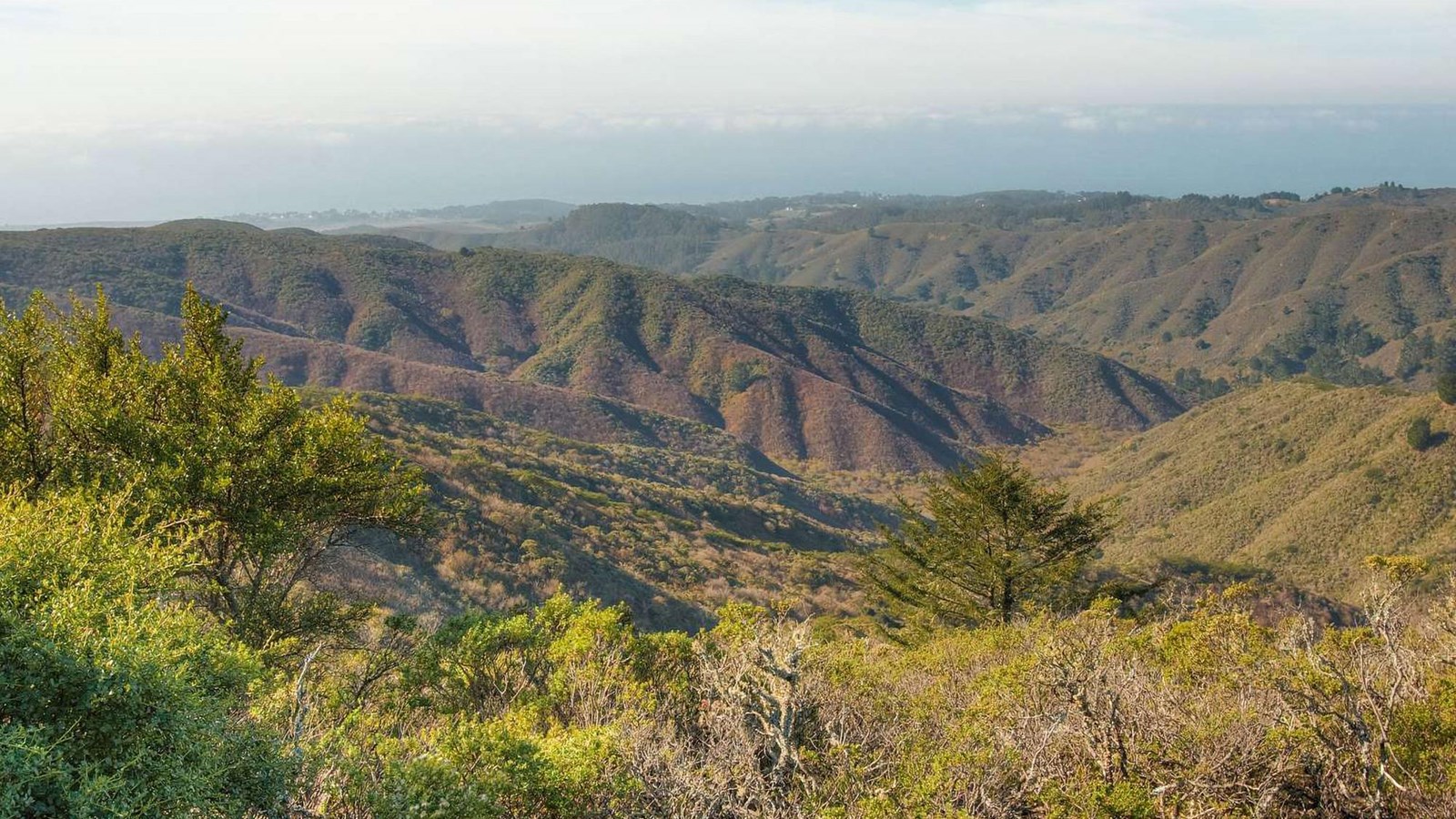Last updated: January 11, 2024
Place
Rancho Corral de Tierra

Kirke Wrench
Trailhead
Rancho, or Rancho Corral de Tierra, if you're not into brevity, is the latest addition to Golden Gate National Recreation Area. The Spanish viewed the ridge and coastline that spans around present Half Moon Bay as having a similar shape to a large, natural corral, which led to the name Rancho Corral de Tierra, meaning "corral of the earth."
Rancho is nearly 4,000 acres of protected agricultural, equestrian-use and undeveloped land. An ongoing project, Rancho is a beautiful work in progress. Plans are underway for new and improved trails that'll open over time.
Trails at Rancho Corral de Tierra
Currently, there is no public parking at Rancho, but we're working on it! For now, you can access the trails by parking at either the Montara State Beach or in the neighborhoods at Montara. You also can hike in from McNee Ranch State Park or Gray Whale Cove State Beach to the north.
Hiking at Rancho can be strenuous. Going through McNee State Park, you can hike up the 8-mile partial loop to Montara Mountain, gaining 2,000 feet in just over a mile. Gray Whale Cove Trail is a less lengthy, less strenuous scenic alternative. Trails at Rancho are currently being repaired. For now, the trails are very steep and sometimes eroded, making hiking conditions difficult.
Lichen at Rancho Corral de Tierra
Unique mutualism between algae and fungus (or algae and cyanobacteria) is seen everywhere in the abundant lichen found on trees, rocks and logs at Rancho. A recent survey found 96 different lichen species in the area, including a few rare and never-before-seen species in this part of California. What's more, lichen have a likin' for areas with excellent air quality, another great reason to explore this remote part of the GGNRA.
Walkin' Wildlife
Rancho is comprised of 4,262 acres of wildlands that countless critters call home. To help keep our animal friends safe from human impacts like freeways and roads, the GGNRA is helping to construct wildlife corridors, safe passages from habitat to habitat that avoid roadways. Cameras reveal that grey foxes, bobcats, coyotes and mountain lions are some of the animal friends making use of the existing walkway.
Grassland Restoration at Rancho
Less than one percent of California's native grasslands remain. Their loss is largely due to development, invasive plants, and changes in fire and grazing patterns that have allowed larger woody plants to take over, and have pushed out many grassland-dependent mammals and nesting birds.
Rancho Corral de Tierra's precious remaining native grasslands are one of the things that make this place so special; however, some of these patches are in imminent danger of being lost to invasive weeds.
NPS recently launched a three-year project that aims to restore some of Rancho's hardest hit grassland areas. The hillsides in Montara will undergo a dramatic transformation as invasive grasses and trees are removed.
The bare ground will be treated with rice straw to prevent erosion and keep weeds from resprouting. Once the weeds are under control, native grassland, wildflower, and wetland species will be replanted to recreate a more natural, beautiful, and diverse landscape.
Rancho - A History of Many People
A crescent-shaped stone tool found just west of Rancho Corral de Tierra was carbon dated between 5,500 and 8,000 years old, making the tool one of the oldest indicators of human presence in the area. The tool places people in the area 500 to 2,500 years before the Ohlone are thought to have arrived.
At the time the Spanish arrived in 1769, the Chiguan Ohlone occupied the territory from Montara Mountain down to Half Moon Bay. The area was sparsely populated; probably no more than 50 people lived in the area.
When Mexico gained prominence in the area, they turned Rancho into two land grants. The holdings were all the way to the ocean to the west and as far inland as the coastal mountains. Later, during the Gold Rush, Rancho served as a home to many immigrant groups including the Irish, Italian, Chinese and Portuguese, as well as the original Mexican "Californio" people, all of whom came to cultivate the land.
Gangsters and Brussel Sprouts
The coastal areas of Rancho Corral are historically famous for growing artichokes, and for bootlegging during Prohibition. Back in the day this awesome place had close connections to organized crime, including an outfit run by Al Capone's brother-in-law, who had a notorious roadhouse nearby, where gangsters left the remains of person killed in a "hit."
By 1940, San Mateo County farmers supplied artichokes, Brussel sprouts and cabbage to California markets. Rancho continued to be cultivated up until the environmental movement of the mid 1970s, when San Mateo County began surveying and studying the land's significance. In 2005, Congress approved the expansion of the GGNRA to include Rancho Corral de Tierra.
